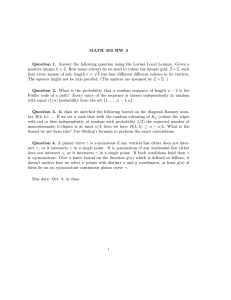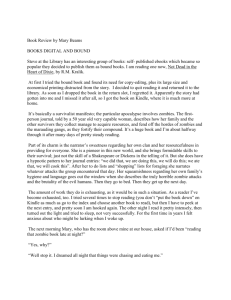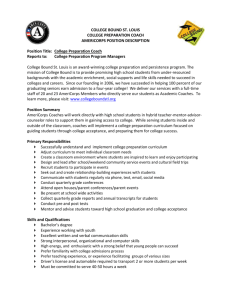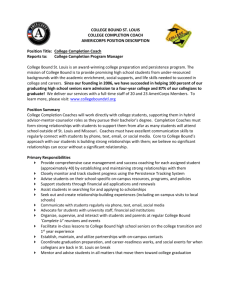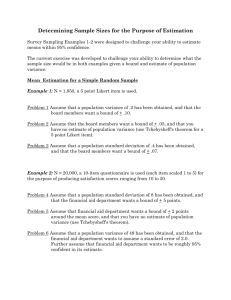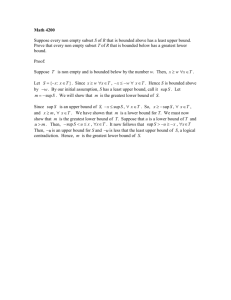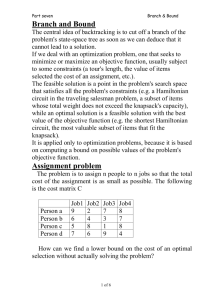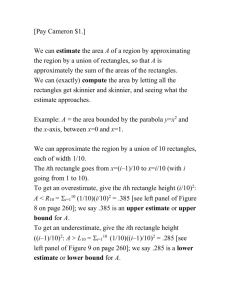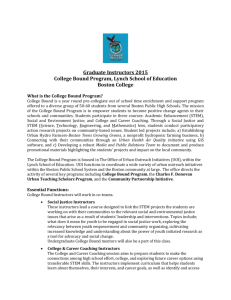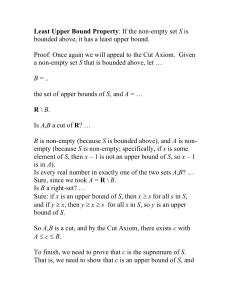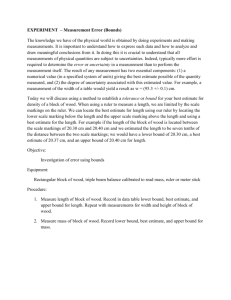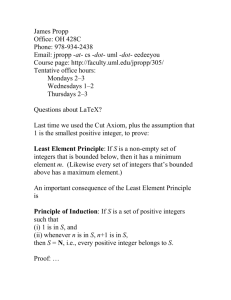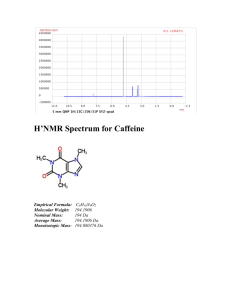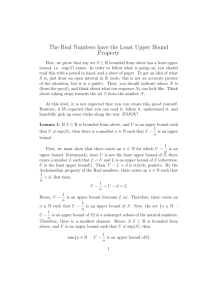College Algebra Lecture Notes, Section 2.4
advertisement
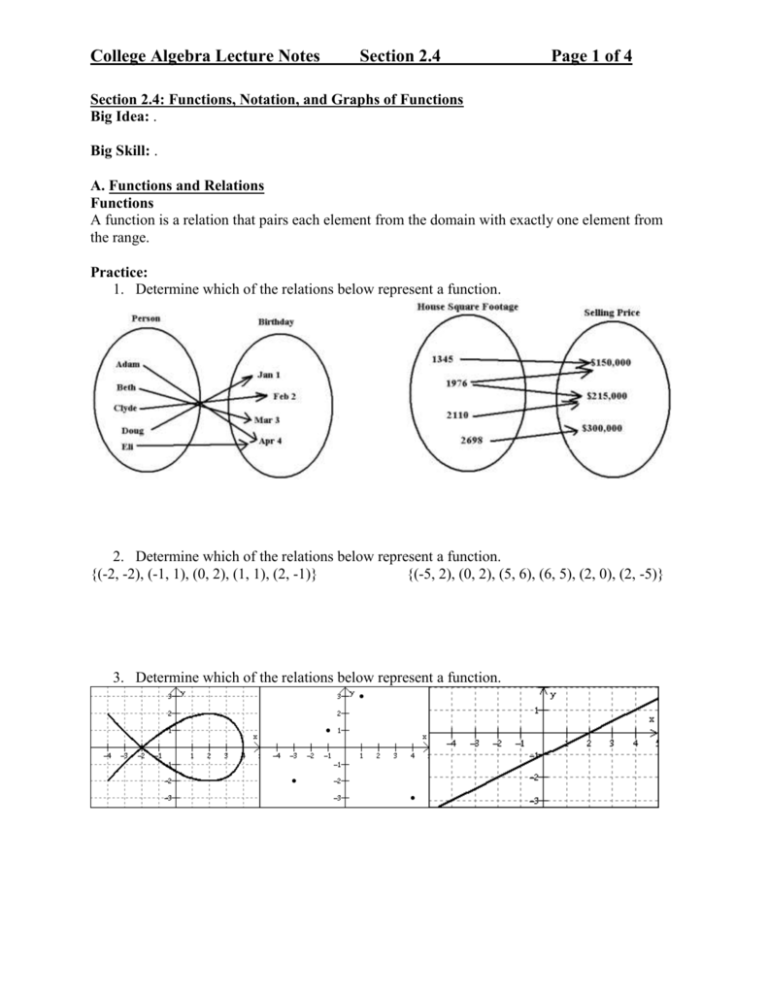
College Algebra Lecture Notes
Section 2.4
Page 1 of 4
Section 2.4: Functions, Notation, and Graphs of Functions
Big Idea: .
Big Skill: .
A. Functions and Relations
Functions
A function is a relation that pairs each element from the domain with exactly one element from
the range.
Practice:
1. Determine which of the relations below represent a function.
2. Determine which of the relations below represent a function.
{(-2, -2), (-1, 1), (0, 2), (1, 1), (2, -1)}
{(-5, 2), (0, 2), (5, 6), (6, 5), (2, 0), (2, -5)}
3. Determine which of the relations below represent a function.
College Algebra Lecture Notes
Section 2.4
Page 2 of 4
Vertical Line Test
A given graph is the graph of a function if and only if every vertical line intersects the graph in at
most one point.
Practice:
4. Determine which of the relations below represent a function.
2
2
x y2
y x 1
x 1 y 2 9
y x2
B. The Domain and Range of a Function
The lower bound for the domain of a function specified by a graph is the least x value for
which there are points on the graph.
o No vertical lines to the left of this lower bound will intersect the graph of the
function.
o If there is no lower bound, then the domain extends to “negative infinity.”
The upper bound for the domain of a function specified by a graph is the greatest x value
for which there are points on the graph..
o No vertical lines to the right of this upper bound will intersect the graph of the
function.
o If there is no upper bound, then the domain extends to “positive infinity.”
The lower bound for the range of a function specified by a graph is the least y value for
which there are points on the graph.
o No horizontal lines below this lower bound will intersect the graph of the
function.
o If there is no lower bound, then the range extends to “negative infinity.”
The upper bound for the range of a function specified by a graph is the greatest y value
for which there are points on the graph.
o No horizontal lines above this upper bound will intersect the graph of the
function.
o If there is no upper bound, then the range extends to “positive infinity.”
College Algebra Lecture Notes
Section 2.4
Page 3 of 4
Practice:
5. State the domains and ranges of all the relations shown in the graphs above.
The implied domain of a function specified by an equation is the set of all real numbers
for which the equation has real values for both variables.
To find the implied domain:
o Assume the domain is all real numbers.
o Eliminate any number or range of numbers that produce undefined or non-real
calculations.
The expression in an even root must be non-negative.
The denominator of a rational expression can’t be zero.
Practice:
6. Determine the domain of y
7
.
x 3
7. Determine the domain of y
2x
.
5 4x
C. Function Notation
Function notation is used to give a name to a multi-step calculation.
In function notation:
o The name of the function comes first
o Parentheses surrounding the independent variable used in the calculation come
second.
o An equal sign is third.
o An algebraic expression representing the calculation is last.
o Example: tax(price) = 0.055price
o Example: f(x) = 3x2 –x + 7
A number or algebraic expression is in the parentheses instead of the independent
variable is mathematical shorthand for evaluating the function using that number or
expression (i.e., plug the number or expression in for the independent variable).
Practice:
1
8. Given f x 3x3 x 2 , evaluate f 2 , f , f 5a , and f b 1 .
3
College Algebra Lecture Notes
Section 2.4
Page 4 of 4
D. Average Rate of Change
Average Rate of Change
For a function that is smooth and continuous on an interval containing x1 and x2, the average rate
of change between x1 and x2 is given by
y y2 y1 f x2 f x1
.
slope m
x x2 x1
x2 x1
This is also the slope of the secant line through x1 , y1 and x2 , y2 .
Practice:
9. .
